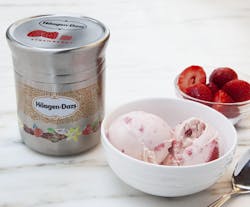If you are human and you live on Earth, you should be concerned about the amount of material waste that is building up on this planet. Sure, we all do our part and throw the aluminum can or plastic bottle in the recycle bin. But did you recently dispose of your toothbrush, your pens, your laundry detergent container or your plastic razors? If you did, you are part of the ever-growing problem.
According to the Environmental Protection Agency (EPA), on average, an individual generates 4.40 pounds of waste per day, and in 2013, Americans tossed out about 254 million tons of trash and recycled and composted about 87 million tons of this material, equivalent to a 34.3 percent recycling rate.
But don’t get discouraged, because Tom Szaky, founder and CEO of TerraCycle, along with some of the biggest consumer packaged goods (CPG) companies, have partnered to develop Loop, a subscription-based home delivery service where the packaging from food and household goods don’t get thrown out or recycled, but reused. Here, consumers “borrow” the high-end, customized single-use packages within which products are housed. It’s much like the milkman who used to come and pick up the empty glass bottles to clean and refill for you—before plastic containers took over.
According to TerraCycle, the Loop program begins when the consumer orders the product and its delivered to their doorstep in a reusable tote. When they are done, they put the empty package in the tote and alert Loop to pick it up. Sorting and cleaning is done by TerraCycle. The final stage of the loop is the return of empty, clean packages to brand owners for refilling. The loop is closed when consumers receive new products.
To get more detail on what Loop is all about, I encourage you to read “Global CPGs Embrace Transformative Loop Circular Shopping Platform,” by Anne Marie Mohan, senior editor at Packaging World, a sister publication of Automation World. There you’ll find details of the partnerships, e-commerce infrastructure and packaging innovations—like a Häagen-Dazs double-walled steel ice cream container that keeps the ice cream frozen during transport and, once opened, ensures it melts more quickly on the top rather than the bottom.
But, there’s more to this story. Here’s the “big picture loop,” as I see it.
First, manufacturers must move to reusable packaging with materials like stainless steel, aluminum, glass and engineered plastics, key factors being durability and cleanability. Then the CPG must redesign the package with an eye toward e-commerce as most of the products will be sold online. Then, they need to reconfigure the supply chain so that the asset takes a U-turn and is brought back to the plant.
I foresee that this new, reusable model will completely disrupt the current manufacturing processes. Don’t get me wrong, I applaud Nestlé, Procter & Gamble, Unilever, PepsiCo, Danone and others for their commitment to eliminate the plastic packaging that is polluting our land and oceans. I’m just completely curious as to how manufacturing will have to change given it flies in the face of what companies currently do, which is procure inexpensive materials to create the cheapest possible packages, knowing they will be tossed out and never returned.
With Loop, the manufacturer basically owns the bottle—which is very likely a different shape and size than what’s currently being produced on the line. Not to mention the more expensive materials, and, Szaky acknowledged in a CNN article that partner companies have to pay to participate in Loop (in the six figure range) and they have to redesign traditional packages, an additional effort that will cost in the seven figure range.
And all of this will likely have repercussions on the machinery and the automation underneath the production lines. Perhaps the industry is heading toward yet a new wave of technology initiatives that will extend the definition of flexible manufacturing. Is Loop going to push the boundaries of ‘batch of one’ even further?
I’m interested in hearing the results of the pilot project that CPG Loop partners will undertake this spring season. In fact, sign me up for a never-ending supply of Häagen-Dazs in one of those steel containers.
About the Author
Stephanie Neil
Editor-in-Chief, OEM Magazine

Leaders relevant to this article:
